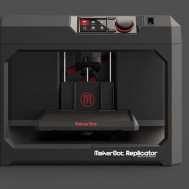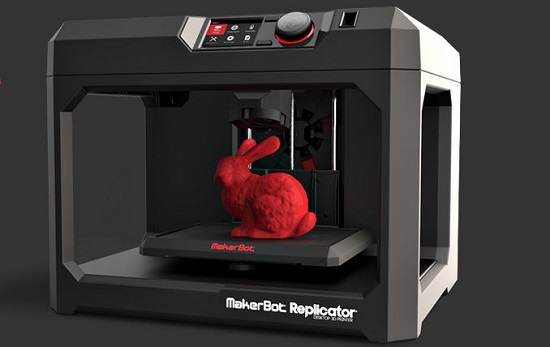Our project engineer Andrew Rich recently took a look at the benefits and limitations of 3D printing and predicted how legacy manufacturers could adapt to the new technology. At the time, we at Apple Rubber were considering how 3D printing could be part of our company’s future.
Fast forward to today: Apple Rubber has officially joined the 3D printing world with the new Fifth Generation MakerBot Replicator Desktop 3D printer.
Meet the MakerBot: 3D Printing Capabilities
As far as 3D printing is concerned, the MakerBot Replicator is on the simpler side of the technology spectrum, but serves as a simple introduction for Apple Rubber to get involved in this new realm of manufacturing.
“This will basically allow us to explore and discover new possibilities,” Rich notes. “In cases like this, brainstorming can only get you so far. Sometimes you need the capabilities in place so when the opportunity arises, you can turn to it as another tool on the belt.”
The new product is MakerBot’s fastest, easiest-to-use printer and is known for its reliability and productivity. The software is designed to work through mobile phones, tablets and desktop computers, offering seamless connectivity.
MakerBot Replicator Desktop features:
- Lightning-fast processor for rapid printing
- Cloud-enabled
- On-board camera for easy sharing
- Build volume of up to 456 cubic inches
“We have been tracking the technology for several years now, but cost versus gain comparison wasn’t really beneficial to us until recently,” Rich says. “With the lower cost of the MakerBot, it made the decision—easy even if the only gain was getting our foot in the door of this amazing technology.”
New benefits for customers
By adding a new in-house 3D printer, we are able to create professional, realistic prototypes and custom models at speedier pace.
“One of the best uses will be for go-no gauges,” Rich says. “With some of the wild custom parts that we produce, it’s much more beneficial to check the size of the part directly in the application. Rather than having customers ship us the gauge, they can just email us the file and we can quickly reproduce the portion of the application in-house.”
The addition of a 3D printer will also help us make more informed preproduction decisions. Engineers can print out parts or inserts to help understand the scale and see how they can orient these units within molds. This will lead to better mold designs and finished products.
In the future, Apple Rubber could make molds that would otherwise be impossible to cut, or finished parts that we would previously be unable to mold.
“The new 3D printer is a tool that could become so much more,” Rich says. “We are a company willing to learn and evolve which makes opportunities like this exciting. We can’t wait to see where this can take us.”
Has 3D printing changed your company? We’d love to know how. Leave your notes in the comments below or on Twitter @AppleRubber.

